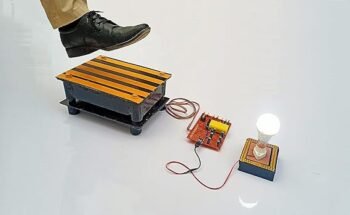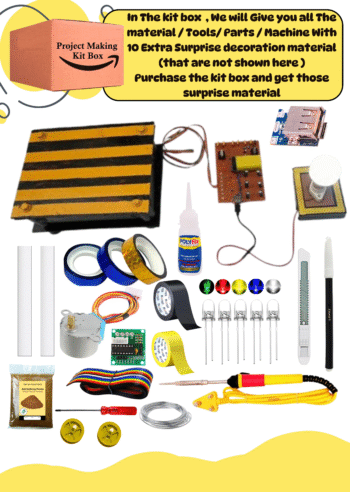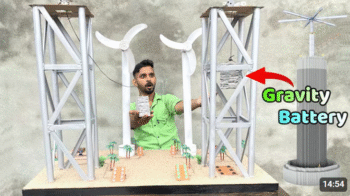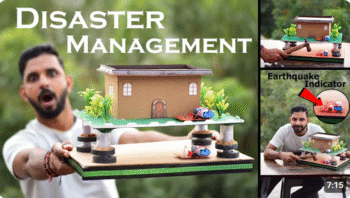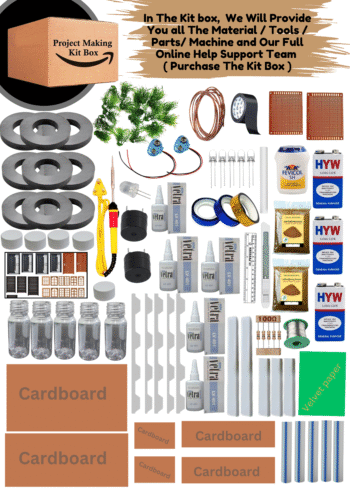-
Footstep Power Generate project kit box/Inspire Award Project Kit/Mechanical Project Kit Box/Science Project Kit Box/Low Budged Project Kit BoxRated 0 out of 5
₹4,499.00Original price was: ₹4,499.00.₹3,600.00Current price is: ₹3,600.00.Footstep Power Generate Mechanical Project
Generate Electricity From Mechanical Energy
Generate Electricity By Pressure
Generate Electricity By Walking
Footstep Power Generate Project -
Gravity Battery Project Kit/Electrical Project Kit/Electonic Project Kit/Science Project Kit/Wind Power Project Kit/Windmill Project Kit/Free Energy Project Kit Visit the The RS Industries StoreRated 0 out of 5
₹3,999.00Original price was: ₹3,999.00.₹3,200.00Current price is: ₹3,200.00.Renewable Energy Storage Solution: Gravity battery is a sustainable energy storage solution for, designed to store excess energy generated from renewable sources like solar or wind.
Low Environmental Impact: Environmentally friendly as it avoids hazardous materials and relies on gravitational potential energy, reducing the ecological footprint. Scalable and Modular Design:
Gravity batteries have longer lifecycles compared to conventional batteries, leading to reduced replacement and maintenance costs. -
Natural Disaster Management Project For Earthquake Safety Based Magnetic Levitation House ProjectRated 0 out of 5
₹2,499.00Original price was: ₹2,499.00.₹2,000.00Current price is: ₹2,000.00.Components Used: Magnetic Levitation System: Uses permanent magnets or electromagnets to lift the house model, allowing it to float above the base platform. Vibration Isolation Pads: Employs magnetic bearings or shock-absorbing materials to minimize the transfer of vibrations. Steel/Metal Frame or Structure: The house model’s structure, designed to represent the building. Sensors (optional): Seismic sensors to detect and measure vibrations or movements during simulation. Electromagnetic Coils: Used to stabilize and control the movement of the levitating model. Controller Circuit: A microcontroller or feedback system to manage the magnetic forces, ensuring stability during vibrations.
Working Principle: The house model is suspended using magnetic levitation (magnetic repulsion or attraction between magnets). When earthquake-like vibrations are simulated, the magnetic levitation system allows the house to float, reducing direct contact with the base, thus isolating the structure from the ground motion. Vibration isolators (magnetic bearings or dampers) absorb the shock and reduce the amplitude of oscillations that reach the house model. The control system adjusts the magnetic forces in real-time to ensure the house remains stable and centered, even during strong simulated shaking.
Key Features: Magnetic Vibration Isolation: A unique method to reduce seismic forces by suspending the structure and minimizing vibration transfer. Enhanced Stability: The floating effect ensures that the structure remains stable, even under simulated earthquake forces. Energy Absorption: The system absorbs the energy from seismic waves, preventing damage to the model. Minimal Ground Contact: Reduced friction and contact with the base platform ensures that vibrations are isolated, protecting the structure.
Applications: Earthquake-resistant Building Design: Demonstrates how magnetic isolation can be used to create buildings that are less susceptible to earthquake damage. Seismic Simulation: Useful for educational purposes, simulations, and demonstrating how buildings can be designed to resist seismic events. Structural Engineering: Can be applied to research in earthquake-resistant technologies, especially for high-risk regions.
Advantages: No Mechanical Wear: Since the house model is levitating, there is no physical contact with the surface, reducing wear and tear. Real-Time Adjustability: Magnetic levitation systems can adapt to changing conditions, making it suitable for different types of ground motion. Cost-Effective and Scalable: This technology can be scaled to protect larger structures without significant cost increases.
Challenges: Magnetic Field Control: Maintaining precise control over the magnetic forces to ensure stable levitation and avoid instability during strong shaking. Power Consumption: Electromagnetic levitation systems may require significant power, especially for larger models or structures. Size Limitations: The magnetic levitation system might be limited in terms of the size of the structure it can support effectively.
Working Demonstration: During an earthquake simulation, the house will be placed on a vibrating platform (representing the seismic waves). The house floats and remains stable due to the magnetic suspension, while the vibration energy is absorbed by the isolation system, preventing damage to the structure.
Conclusion: This project demonstrates a cutting-edge, innovative approach to earthquake resistance using magnetic vibration isolation. It showcases how magnetic forces can be used to protect buildings and structures from seismic damage, making it a valuable tool for future earthquake-resistant designs.

